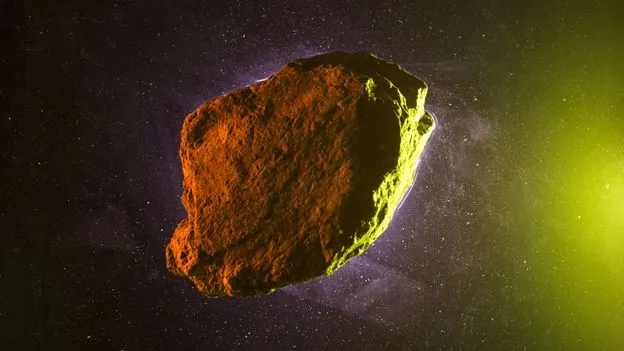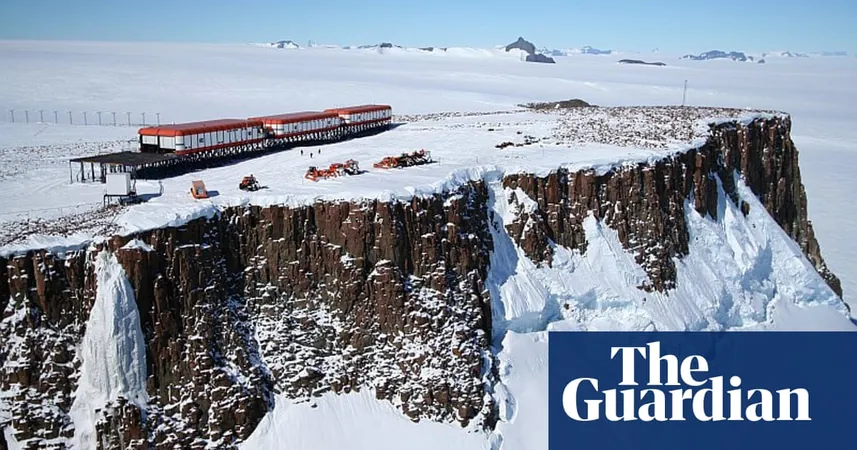
The Race for the Cosmos: Will Asteroid Mining Reshape Our Future?
2025-03-23
Author: Wai
Introduction
In a striking turn of events, a California-based asteroid mining start-up, AstroForge, has encountered significant challenges with its maiden mission to mine celestial bodies. As the company faces communication issues with its unmanned spacecraft, named Odin, the question remains—how close are we to extracting rare minerals from the asteroids that orbit our planet?
Flipping back to the 1990s, the BBC's 'Tomorrow's World' boldly predicted that by 2025, we would see innovations like asteroid mining. Although that reality hasn’t fully materialized yet, enthusiasm for asteroid mining is surging, with companies like AstroForge asserting that the dream is closer than we think.
The Mission of Odin
On February 27, 2025, AstroForge launched Odin aboard a SpaceX Falcon 9 rocket from Florida’s Kennedy Space Center. Following the launch, the spacecraft was expected to embark on a nine-month journey towards asteroid 2022 OB5, located approximately 8 million kilometers from Earth. Unfortunately, ongoing communication failures have raised concerns about Odin’s mission, but AstroForge remains undeterred. Company founder Matt Gialich affirms, 'We have to try,' emphasizing a commitment to perseverance, regardless of the technical difficulties they face.
Goals of AstroForge
AstroForge's ambition isn’t merely exploratory; they aim to extract concentrated metals, particularly platinum-group metals vital for fuel cells and renewable technologies. These metals are becoming increasingly difficult and costly to mine on Earth for various reasons including environmental, financial, and geopolitical constraints.
Skepticism and Challenges
However, skepticism abounds regarding the feasibility of asteroid mining. Critics argue that the extraction and transportation of materials from space might result in environmental concerns of their own. For instance, the challenges of zero-gravity mining processes remain unanswered. Ian Lange, an associate professor at the Colorado School of Mines, points out that mining from asteroids—while potentially viable—poses unique hurdles compared to terrestrial mining.
Historical Context
Historically, the concept of mining asteroids gained traction in the 1980s as NASA explored the potential of space resources. Fast forward to today, and while several efforts have come and gone—including ventures by now-defunct companies—new technological advancements are revitalizing interest in harvesting the cosmos.
Technological Advances
Recent years have witnessed exponential growth in space technology; launching payloads into orbit is radically cheaper thanks to the rise of private space firms and reusable rocket technology. Victor Vescovo, a notable investor in AstroForge, suggests we're on the brink of making asteroid mining a reality, stating that previous achievements in space missions lend credibility to future endeavors.
Global and Economic Implications
Notably, the conversation surrounding asteroid mining also includes potential implications for global politics and economics. If successful, asteroid mining could shift the power dynamics between resource-rich developing nations and technologically advanced countries. Deganit Paikowsky, a scholar at George Washington University, warns of potential upheaval if resources mined from space are brought back to Earth for commercial purposes.
Environmental Considerations
The environmental implications of asteroid mining are also under scrutiny. Kathryn Miller, an environmental scientist, posits that harvesting resources from asteroids could potentially provide a less destructive alternative to terrestrial mining. Notably, a 2018 study indicated that mining platinum from asteroids could emit just 150kg of CO2 per kilogram, in stark contrast to 40,000kg produced by traditional Earth mining practices.
Future of Asteroid Mining
Additionally, the concept of mining asteroids extends beyond mere mineral extraction for Earth. Experts like Daynan Crull emphasize the future of asteroid mining may lie in the development of a sustainable economy in space, using resources for construction and maintenance of space habitats rather than shipping them back to Earth.
Legal Questions
As we stand at this precipice of possibility, significant legal questions loom. The 1967 Outer Space Treaty—widely regarded as the cornerstone of international space law—does not specifically address the ownership of resources from celestial bodies, leaving room for interpretation. Rosanna Deplano, an international space law expert, highlights that this ambiguity could incentivize commercial exploitation of asteroid mining.
Conclusion
One thing is certain: the journey to mining the stars—a concept once deemed fantastical—is already transforming into a tantalizing and potentially groundbreaking reality. Will it lead us to a future of prosperity or conflict? Only time will tell as we venture boldly into the cosmos in search of the treasures it holds.
Stay tuned as this adventure unfolds—who knows, the first trillionaire could indeed come from outer space!

 Brasil (PT)
Brasil (PT)
 Canada (EN)
Canada (EN)
 Chile (ES)
Chile (ES)
 Česko (CS)
Česko (CS)
 대한민국 (KO)
대한민국 (KO)
 España (ES)
España (ES)
 France (FR)
France (FR)
 Hong Kong (EN)
Hong Kong (EN)
 Italia (IT)
Italia (IT)
 日本 (JA)
日本 (JA)
 Magyarország (HU)
Magyarország (HU)
 Norge (NO)
Norge (NO)
 Polska (PL)
Polska (PL)
 Schweiz (DE)
Schweiz (DE)
 Singapore (EN)
Singapore (EN)
 Sverige (SV)
Sverige (SV)
 Suomi (FI)
Suomi (FI)
 Türkiye (TR)
Türkiye (TR)
 الإمارات العربية المتحدة (AR)
الإمارات العربية المتحدة (AR)